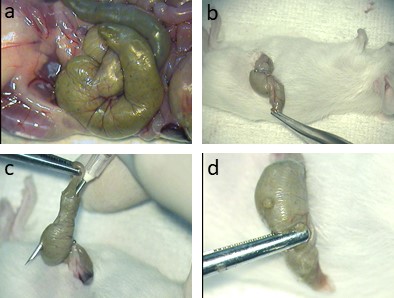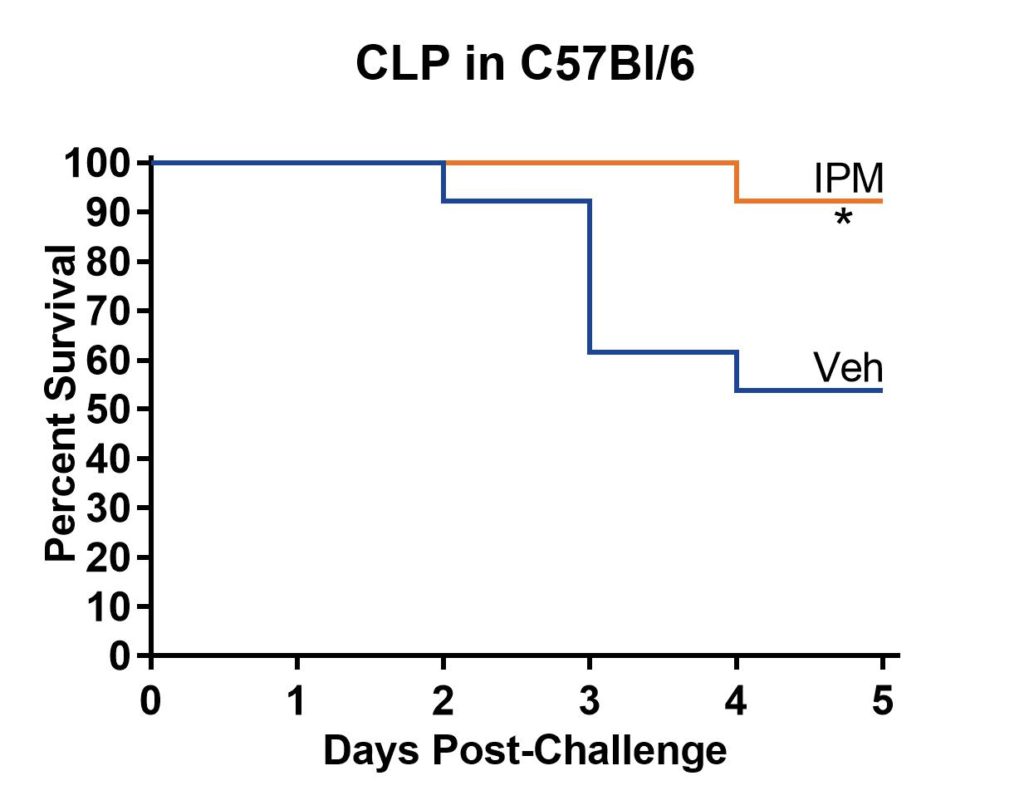Cecal Ligation and Puncture (CLP)
Cecal Ligation and Puncture (CLP)
The cecal ligation and puncture (CLP) mouse model is the gold standard for inducing and studying sepsis, a serious condition characterized by systemic inflammation in response to widespread infection. More than 1.5 million Americans get sepsis each year, with about 250,000 of those patients dying annually. The objective of our murine CLP model is to evaluate the efficacy of novel antibacterial therapies for sepsis.
Procedure
We have established a CLP model in mice. The cecum and adjoining instestine are exposed (a) and the cecum is tightly ligated at its base below the ileocecal valve with a steel clip (b). A through-and-through puncture is made using a needle (c) and the cecum gently squeezed to extrude a small amount of feces from the puncture sites (d). The cecum is then returned to the peritoneal cavity.
Sample Data
Between 6 and 12 hours post-procedure, mice develop clinical signs of sepsis, including lethargy and diarrhea. Death occurs between 24 and 60 hours post-CLP, and mortality rates are predictable based on the size of the needle used for cecal perforation.







